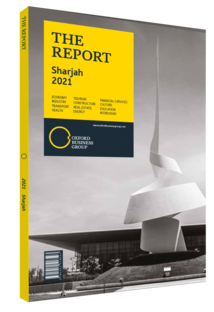How can sustainability support the global economic recovery?
Many emerging markets are turning to infrastructure projects to stimulate recovery from the Covid-19 pandemic, with a particular focus on green and sustainable developments. Despite the broader downturn in 2020 – which the IMF says resulted in the global economy contracting by 3.5% – the number of newly announced infrastructure projects increased by 5%, according to analysis from global financial data company Refinitiv. In total, 2550 new projects were announced in 2020, with a combined value of $739bn. Of these, 56% were classified as sustainable – primarily made up of renewable energy projects in the solar, wind, biomass and hydroelectric segments. This was the fourth consecutive year in which the number of sustainable projects increased, rising from 808 in 2016 to 1437 in 2020. A majority of infrastructure projects were in the power sector (63.7%), followed by transportation (11.4%), leisure and property (7.9%), and oil and gas (5.6%). While the majority were in Western Europe (604) and North America (419), 297 were announced in Latin America and 257 in South-east Asia. Indeed, Vietnam connected more than 9 GW of solar power to the system over 2020.
Green Projects
An expansion in the volume of infrastructure projects is expected to continue into 2021, as restrictions ease and governments look to stimulate their economies. An example of a potential infrastructure-led recovery is US President Joe Biden’s proposed multibillion-dollar Build Back Better plan, which aims to repair much of the country’s physical infrastructure – such as roads, bridges and airports – while investing significant amounts in new broadband internet developments and green energy projects.
From a global perspective, green developments are once again expected to be one of the major drivers of infrastructure growth, spurred on by growing demand for renewable energy and governmental efforts to meet carbon-reduction targets. The value of green bonds defied the pandemic-related slowdown to reach a record high of $269.5bn in 2020, according to the Climate Bonds Initiative, a figure that some suggest could be as high as $400bn-500bn in 2021.
Examples of major sustainability-minded infrastructure strategies include the EU’s €1trn European Green Deal plan, which envisages massive investment in sustainable projects to ensure the bloc is climate neutral by 2050, and China’s Belt and Road Initiative, which is placing greater emphasis on sustainable infrastructure in the wake of the pandemic through its Green Silk Road plan. Elsewhere, significant investment is expected in telecommunications infrastructure following the rapid uptake of digital services throughout the pandemic.
As global demand patterns shift, renewed investment is necessary to bridge the ongoing infrastructure gap. Despite an increase in projects last year, the world has long been underinvesting in infrastructure. According to the Global Infrastructure Hub, a G20 initiative, the world is facing a $400bn gap in infrastructure investment in 2021, a figure that could cumulatively grow to $15trn by 2040 if current rates of spending continue.
Leading the Way
Emerging markets are expected to be a key engine of growth for global infrastructure investment. According to projections from insurance company Swiss Re, of the $66bn in infrastructure spending expected between 2021 and 2040, some $43bn is to come from emerging markets. Much of this will be driven by emerging Asia, which will account for $35bn in infrastructure spending over the period.
In Sharjah, for example, the Sharjah Investment and Development Authority, better known as Shurooq, has prioritised waste management and environmental sustainability in the emirate, highlighting significant investment opportunities in solar energy, in particular. In March 2019 Shurooq and Diamond Developers from Dubai announced the creation of Sharjah Sustainable City. The Dh2bn ($544.4m) solar-powered and water-efficient residential community is being built over 669,00 sq km. The sustainable project was 35% complete as of November 2020, and the finishing date is set for 2024.
You have reached the limit of premium articles you can view for free.
Choose from the options below to purchase print or digital editions of our Reports. You can also purchase a website subscription giving you unlimited access to all of our Reports online for 12 months.
If you have already purchased this Report or have a website subscription, please login to continue.

